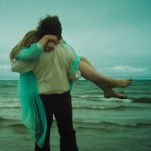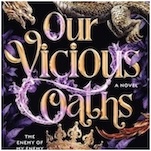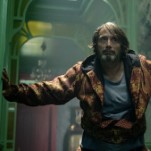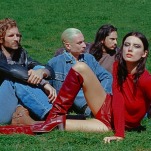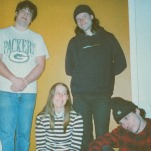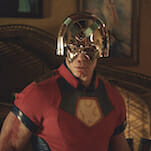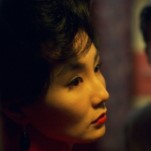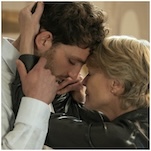Thirteen Ghosts Thrives as a Trashy Early Aughts Talisman
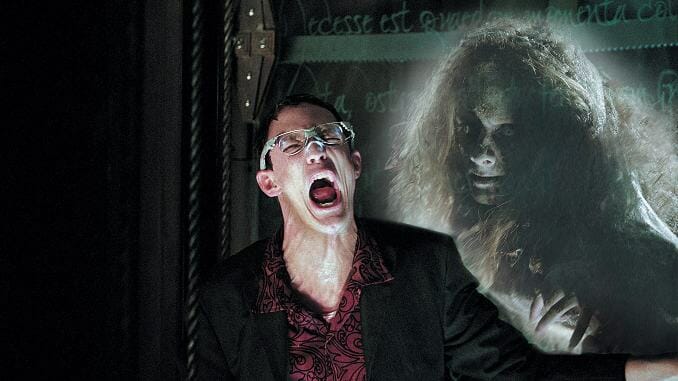
No one is going to argue that the 2001 Dark Castle Entertainment production Thirteen Ghosts is a triumph of cinematic ingenuity. Though it boats ostentatious set design and gory kills, these visual flourishes obscure an otherwise flimsy narrative thread. Yet somehow, this is precisely what instills the film with such a palpable essence of early aughts appeal: Through its superficial trashiness, it serves as a testament to 2000s aesthetic values. Saturated in a greenish tint, exploring a mainstream tolerance for graphic violence and featuring adventurous acclaimed actors, Thirteen Ghosts is a perfect example of the decade’s obsession with remakes, mythology and misanthropic edginess.
Based on the 1960 film 13 Ghosts written by Robb White and directed by William Castle (the inspiration for production company Dark Castle Entertainment’s name), Steve Beck’s adaptation uses its source material as a loose blueprint, building upon it in order to satisfy a 21st century audience seeking amplified scares. When Arthur Kriticos (Tony Shalhoub) is left his estranged uncle Cyrus’ (F. Murray Abraham) sprawling estate after his passing, he is relieved that he will no longer have to evade his mounting pile of past due mortgage bills. He immediately shuttles his young son Bobby (Alec Roberts), teenage daughter Kathy (Shannon Elizabeth) and live-in nanny Maggie (Rah Digga) to their new abode, which turns out to be far more enigmatic than they were expecting. Constructed entirely of glass panels inscribed with Latin incantations, the family is perplexed, but otherwise undeterred in their enthusiasm for living in comparative luxury.
Joining them at the mansion are Cryrus’ estate lawyer (J.R. Bourne) and former employee Dennis (Matthew Lillard), who has disguised himself as an electrician in order to gain access inside the glass walls. After some preliminary snooping, Dennis stumbles upon something horrifying: In the mansion’s dingy basement, 12 vengeful ghosts are stewing in caged captivity. Unbeknownst to Arthur and his family, his deceased uncle’s profession was ghost hunting; unbeknownst to Dennis, Cyrus has been keeping some of their most dangerous paranormal encounters behind enchanted enclosures. Dennis drops his facade in order to alert the family of the house’s dangerous residents, but it’s already too late. The clueless lawyer has already unintentionally released all 12 ghosts, two pieces of glass bisecting him in the process. Separated in the labyrinthine mansion, the family must fight to fend off the spirits if they hope to avoid becoming the eponymous thirteenth ghost in the process—joining the phantom of the Kriticos matriarch, who died in a tragic house fire six months beforehand and has since been captured and trapped in the estate.
There are a great deal of similarities between Thirteen Ghosts and its 1960 inspiration, but it’s the even greater plethora of deviations and era-specific details that make the movie worth remembering. In the original Castle film, the apparitions themselves are relatively innocuous: Transparent entities enveloped in a hazy silver halo, they consist of a murderous Italian chef, a lion and his headless tamer, a (literally) bare-bones skeleton. Of course, the number of ghosts and the circumstances of inheriting the estate remain virtually unchanged—the biggest divergence being the spirits’ malicious nature and desire to cause imminent bodily harm to any human they meet. Yet both films are largely conduits for showcasing the special effects inherent to creating the entities, whether manifesting as a 3D “Illusion-O” gimmick or impressive special effects and transformative prosthetic make-up.
-

-

-

-

-

-

-

-

-

-

-

-

-

-

-

-

-

-

-

-

-

-

-

-

-

-

-

-

-

-

-

-

-

-

-

-

-

-

-

-





























